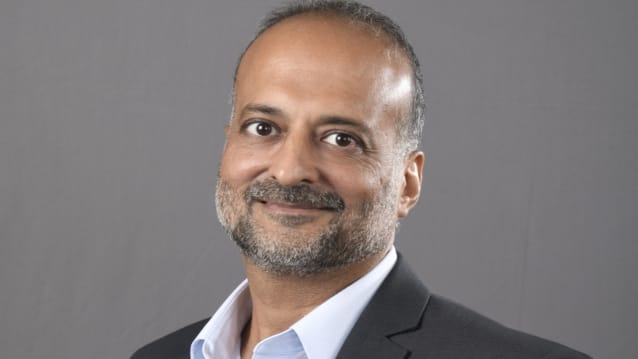In a detailed conversation with FE BFSI, Anurag Gupta, Vice President and Head of Global Merchant and Network Services at American Express Banking Corp., India, sheds light on how the company (Amex) is navigating this rapidly transforming landscape.

Gupta highlights initiatives that combine technology, data insights, and strategic partnerships. (Source: prhandout)
Payments in India are today no longer just about swiping a card or scanning a QR code; they are a window into how technology, consumer behaviour, and regulations intersect. Contactless payments, digital wallets, and card transactions are converging to create an ecosystem that is faster, more secure, and increasingly omnichannel. For merchants, keeping pace with this evolution is as much a challenge as it is an opportunity.
In a detailed conversation with FE BFSI, Anurag Gupta, Vice President and Head of Global Merchant and Network Services at American Express Banking Corp., India, sheds light on how the company (Amex) is navigating this rapidly transforming landscape.
From expanding acceptance beyond large, premium merchants to supporting smaller businesses in tier-II and tier-III cities, Gupta highlights initiatives that combine technology, data insights, and strategic partnerships. He also discusses how the company is leveraging analytics to help merchants understand customer behaviour, optimise operations, and drive growth while maintaining stringent security standards. Edited excerpts below:
How is Amex positioning itself amid the transformation in the Indian payment industry, both in terms of supporting merchants and adapting to the shift toward contactless payments?
India’s payment industry is going through a transformation fueled by digitization, evolving consumer behavior, and developments in the ecosystem, especially from a regulatory standpoint. So, today's consumers are far more digitally confident and aware, and hence there is a strong shift towards contactless payments driven by three main factors -- convenience, speed, and security. This is what American Express stands for.
With respect to merchants, they are at the heart of the Indian digital payments story. The important thing for us is to see how we enable payments for small merchants via a variety of form factors, and also work with large merchants to co-create innovation apart from how we do things, which are different in the payments market. So, it's more like enabling the payments from a merchant ecosystem standpoint.
Amex historically focused on large and premium merchants. How are you driving adoption among smaller merchants, especially in tier-II/III cities where UPI dominates?
We have always focused on increasing our coverage in the payments market by making sure that we are available where our card members want to spend. So, whether it's a small merchant segment or a large merchant segment, we definitely want to be there. We are doing this by partnering with major banks and have collaborated with fintechs and payment aggregators for online acceptance, given that online spend is a very important component.
Why merchants accept American Express cards is because we bring to them high-value card members who typically spend more than any other card members on any other payment network.
We get maximum visibility to merchants through programmes like Offers Next Door, focused on local merchants, which kind of advocates buy local - spend local. These programmes also encourage our card members to shop locally. So, from an ecosystem standpoint, we are enabling the merchants on the payment side and getting our card members to spend at these merchant locations. This helps the merchants as well as American Express.
The Reserve Bank of India (RBI) recently tightened rules for offline payments, imposing stricter compliance standards for payment aggregators. How is Amex India adapting its merchant services to align with these new regulations?
This is pretty much restricted to QR-based payments, and for that, the credit cards enabled are only on Rupay. At Amex, we have probably the lowest loan write-off rates in the industry. Through analytics, we can look at the risk parameters from both merchants' and card members' standpoints. Therefore, the challenge or any risk we may see in any kind of payment is very low in comparison to others.
Amex has traditionally had a higher merchant discount rate (MDR) compared to other networks. How are you balancing merchant profitability with Amex’s positioning in India?
It is a perception that Amex cards have been traditionally expensive. We have always priced them to value. It depends on the value we bring to the merchant. For Amex, sectors like travel and entertainment have been a sweet spot. That's where we bring a lot of value to our merchants. The value is not only on account of the high-profile and high-spending customers, but also a lot of the loyalty programs and offers that we provide. If you combine all of them and look at the value we bring to merchants is what makes us premium.
On the other hand, pricing for small merchants is quite in line with the industry. We have different pricing segments for different categories of merchants. If it's small merchants, we are in line, but merchants for whom we bring extra value, that's where we may have some premium.
Also read: Fintech SRO FACE Issues Whistleblower Guidelines to Strengthen Oversight in Fintech
How is Amex India integrating AI and 5G technologies into its merchant services to enhance fraud detection and transaction speed?
We are looking at newer things in these areas, but nothing active for me to share currently.
How do you use analytics to support merchants?
It's important for a merchant to know what the lean period is, what his customer demographics are, how many inbound card members are coming into his establishment, etc. So, we are able to share smart reports and information with merchants based on the data we have, which helps merchants optimise their card members’ experience through various offers.
What's the biggest challenge for you right now?
I think one of the fundamental challenges is the fast pace at which the industry is evolving. While we want to drive a lot of innovations but it's also about keeping pace with the changes and market expansion. We are partnering with the government and the industry to see how we can manage and work together.
The other area is about ensuring the security of transactions. The card members should feel the safety of using a credit card, and so we make sure that there is minimal risk from a default standpoint. So, making sure the transactions are safe and secure is a big challenge.
Also read: RBI Tweaks Loan Rules for Retail Borrowers, Working Capital Access for Jewellers
Going forward, do you see cards and UPI continuing to co-exist?
It would be complementary instead of competing because UPI has opened up the payments market, and as merchants evolve and become bigger, they would want to have all kinds of form factors of payment acceptance. The needs and the use cases for credit cards are quite a bit and therefore, the market will continue to expand.
Is Amex considering any sustainability initiatives? How does the company plan to support merchants in adopting environmentally friendly practices?
From a sustainability perspective, I think that by having more and more digital transactions, the reliance on paper is reducing. Today, when you use an Amex card, a lot of times you are just able to make the payment without needing the physical copy of the bill.
How do you see the merchant landscape evolving in India and what would be the focus area for Amex?
Fundamentally, our acceptance is driven by where our card members want to spend. There is no way that people want to focus only on premium or only go mass. So, balance is the right solution as far as acceptance is concerned. With respect to the form factor, the contactless way of making payments is expanding rapidly. So whatever is required from an innovation standpoint, we are working on it.
We have grown exponentially in the last few years, with strong online acceptance of our cards and also offline in tier two and tier three cities. Amex is accepted at more than 160 million locations and in the last few years, we've grown by almost five times. Our focus would continue to get into more and more places which accept our card, and also further expansion into tier three and four cities as well.
Empower your business. Get practical tips, market insights, and growth strategies delivered to your inbox
By continuing you agree to our Privacy Policy & Terms & Conditions
